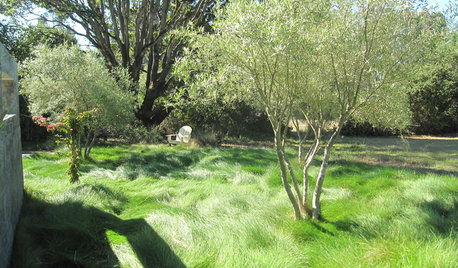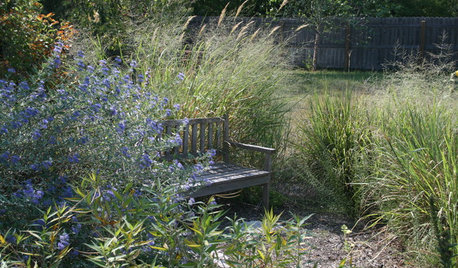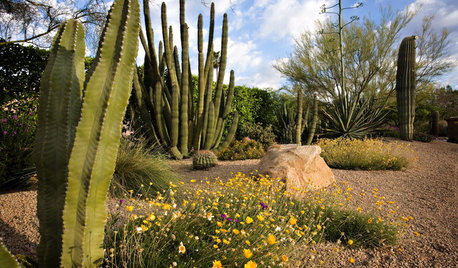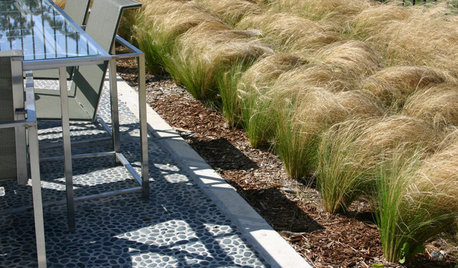Very, very tall hardy grass--what is it?
spruceman
17 years ago
Related Stories

GARDENING AND LANDSCAPING7 Ornamental Grasses for Coastal Gardens
These hardy seashore plants evoke the ocean, sway in the breeze and help prevent sand erosion in the landscape
Full Story
GARDENING GUIDESGreat Design Plant: Purple Needle Grass, California’s State Grass
The long-lived, drought-tolerant Stipa pulchra is as admired for its benefits as for its good looks
Full Story
GARDENING GUIDESGreat Design Plant: Indian Grass
Bring whispers of prairie winds to your garden with this swaying native grass that stands tall all winter
Full Story
SOUTHWEST GARDENINGTall Cactuses Bring Drama to Southwestern Gardens
See how 5 columnar cactuses add a striking design element to warm-weather gardens, courtyards and entries
Full Story
LANDSCAPE DESIGNGreat Design Plant: Retreat to the Shade of Hardy Catalpa
Big foliage and a towering height provide a shady respite in summer, but that's not all hardy catalpa offers dedicated gardeners
Full Story
GARDENING AND LANDSCAPINGOrnamental Grasses in the Landscape
Low-maintenance grasses add beauty and motion to the garden
Full Story
GARDENING GUIDES10 Cold-Hardy Succulents for Cool-Season Interest
These attractive plants shrug off colder temperatures, and many can be brought inside in containers in extra-chilly climates
Full Story
GRASSES10 Ways to Use Ornamental Grasses in the Landscape
These low-maintenance plants can add beauty, texture and privacy to any size garden
Full Story
CENTRAL PLAINS NATIVE PLANTS10 Top Grasses for the Central Plains
Low-maintenance grasses provide seasonal interest and wildlife habitat, and aid good design
Full Story
LANDSCAPE DESIGNGreat Design Plant: Lively Fountain Grass Thrives Just About Anywhere
Enjoy fountain grass for its exuberant form, long-lasting color and texture for borders and more
Full Story






donn_
sprucemanOriginal Author
Related Professionals
Lakeland Landscape Contractors · Barrington Landscape Contractors · Cicero Landscape Contractors · Galveston Landscape Contractors · Laguna Hills Landscape Contractors · Las Vegas Landscape Contractors · Plantation Landscape Contractors · Los Angeles Solar Energy Systems · Menifee Solar Energy Systems · Salem General Contractors · Bound Brook General Contractors · Prichard General Contractors · Red Wing General Contractors · River Forest General Contractors · Sheboygan General Contractorsdonn_
sprucemanOriginal Author
noki
donn_
alchemilla
noki
lkz5ia